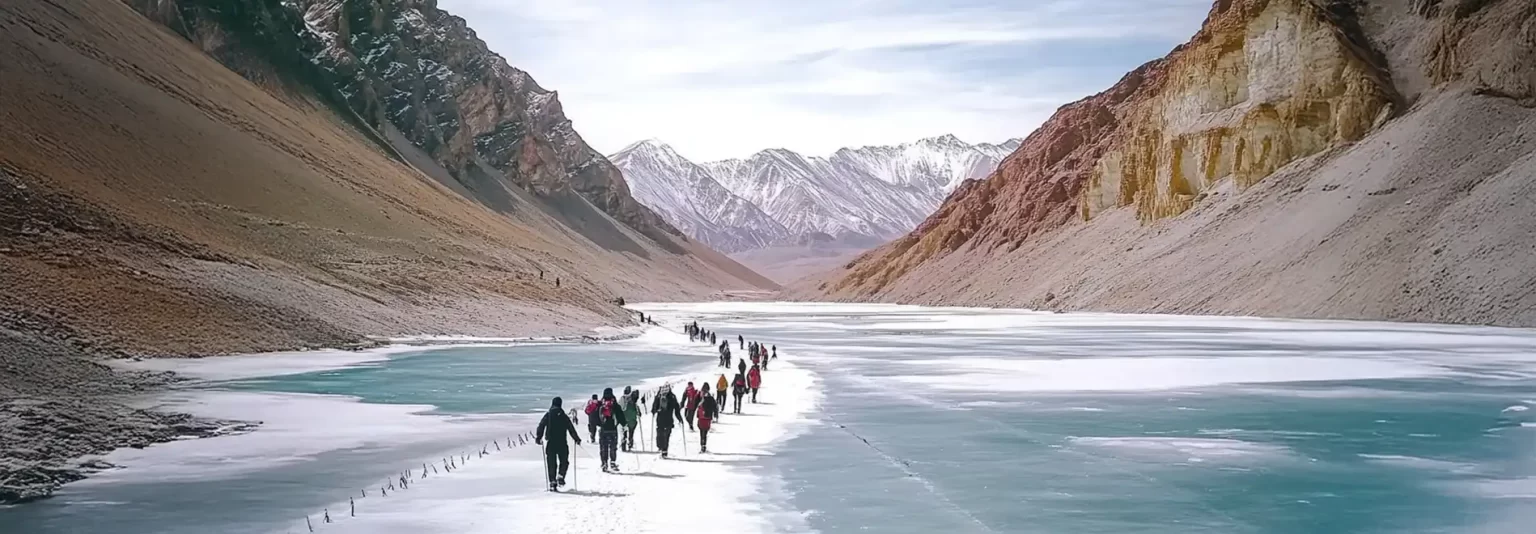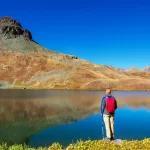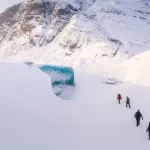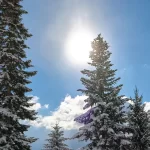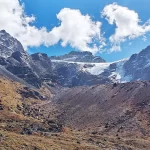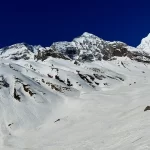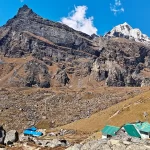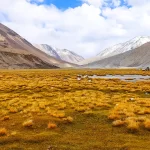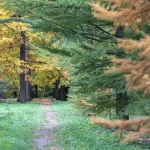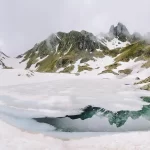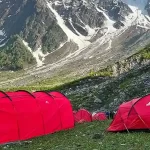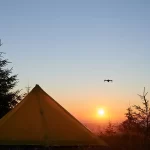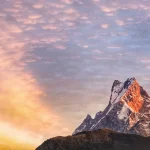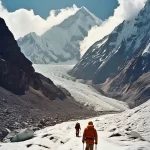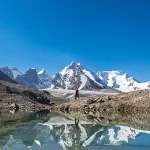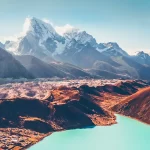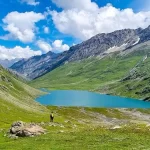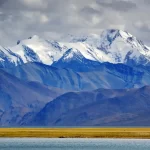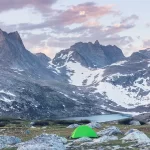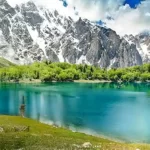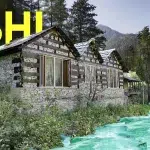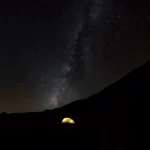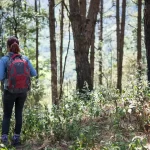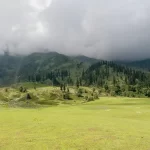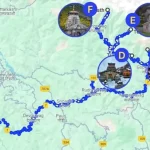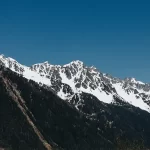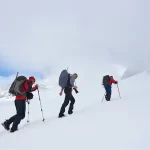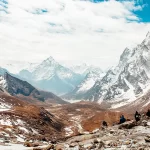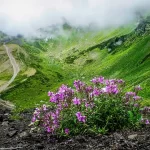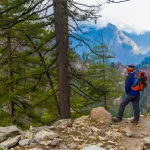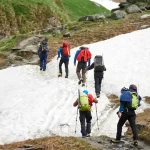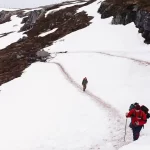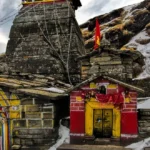Chadar Trek: Exploring the Frozen River Adventure in Ladakh
If you’re an adventure seeker dreaming of an unforgettable winter trek, the Chadar Trek in Ladakh should be at the top of your list. Known as the “Frozen River Trek,” the Chadar Trek Ladakh offers a once-in-a-lifetime experience, walking on the frozen Zanskar River amidst some of the most stunning, remote landscapes in the Himalayas. Let’s dive into every detail you need to know about this iconic Chadar Trekking journey.
What Is the Chadar Trek?
The Chadar Trek, or Chadar Trekking as it’s often called, is a winter trail over the frozen Zanskar River in Ladakh, India. This isn’t just any trek—it’s a challenging, breathtaking expedition where you walk on a thick sheet of ice, surrounded by towering cliffs and snow-covered mountains. Traditionally, the Chadar Trek was the only way locals accessed Zanskar Valley during harsh winters when roads were blocked by snow. Today, it’s a bucket-list adventure for trekkers worldwide, drawing adventurers for its unique beauty and extreme conditions.
Height and Altitude of the Chadar Trek
The Chadar Trek Ladakh doesn’t involve extreme altitude gains like other Himalayan treks, but it still demands respect. The trek starts at Chilling, around 10,390 feet (3,165 meters), and reaches a maximum height of about 11,123 feet (3,390 meters) at points like Nerak. While the elevation isn’t towering, the real challenge lies in adapting to the high-altitude cold desert of Ladakh, where temperatures can plummet drastically.
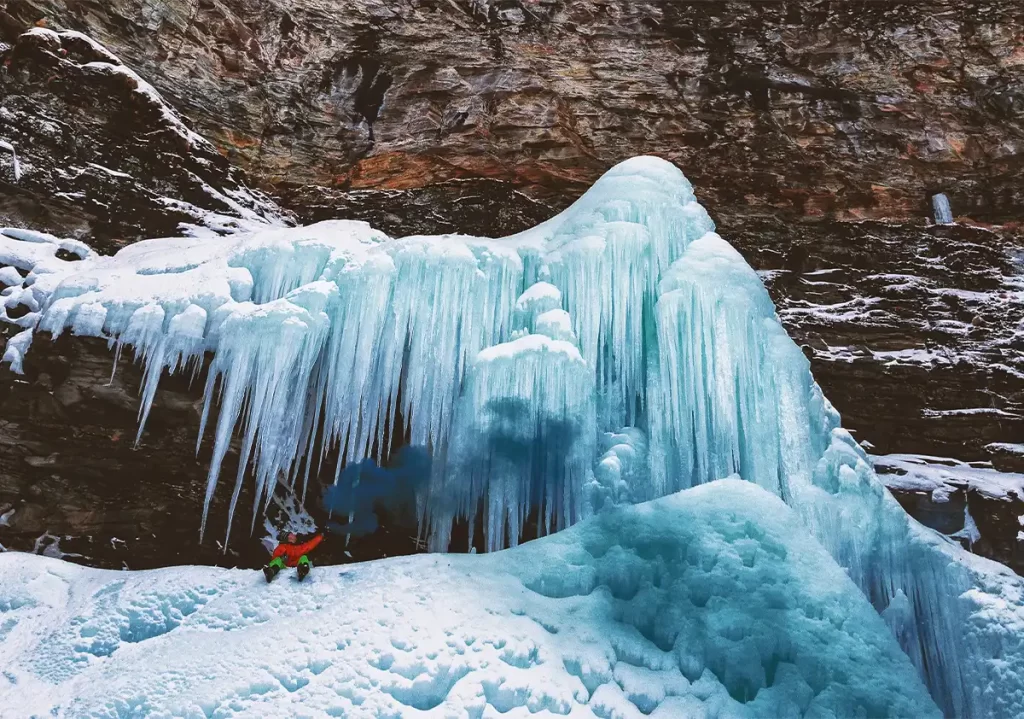
Distance and Duration of the Chadar Trek
The Chadar Trek covers an impressive distance of approximately 62 to 105 kilometers, depending on the route and conditions. Most trekking companies organize a 6- to 9-day itinerary, with trekkers walking 10-17 kilometers per day on average. For example, you might trek 15-17 kilometers daily, taking 5-6 hours to navigate the frozen river. The journey typically starts from Chilling, passes through camps like Tilat Sumdo, Shingra Koma, Tibb Cave, and Nerak, and returns the same way, making it a point-to-point trail with camping at the same locations on the return.
Best Time for Chadar Trekking
The Chadar Trek is only possible during the frozen winter months, specifically from mid-January to February, sometimes extending into early March. January and February are ideal because the Zanskar River freezes solid, creating a stable “Chadar” (ice sheet) for walking. However, the trek depends heavily on weather—warmer days can melt the ice, making it unpredictable. Temperatures range from -5°C to -15°C during the day but can drop to -25°C to -35°C at night, especially at camps like Nerak.
Route and Highlights of the Chadar Trek Ladakh
The Chadar Trek begins in Leh, where you’ll need to acclimatize for 2-3 days at 11,400 feet before heading to Chilling (64 km from Leh, a 2.5-hour drive). From Chilling, you start walking on the frozen Zanskar River, crossing dramatic gorges with cliffs up to 600 meters high. Here are the key highlights of the Chadar Trek Ladakh route:
- Tilat Sumdo: Your first camp, offering a deep-freeze morning walk on the Chadar. It’s a stunning introduction to the icy trail.
- Shingra Koma: A scenic campsite under a stone wall, where the river turns beautifully, surrounded by cliffs and starry skies.
- Tibb Cave: A natural cave shelter, perfect for warming up after icy treks, with a cozy, otherworldly vibe.
- Nerak: Home to the iconic frozen Nerak Waterfall, a 56-foot marvel frozen in time, and the Nerak Pul (wooden bridge), adding a thrilling crossing to your Chadar Trekking adventure.
The trail features frozen waterfalls, icy cliffs, and breathtaking views of Ladakh’s winter wonderland. You might even spot wildlife like snow leopards or blue sheep, making the Chadar Trek Ladakh a true Himalayan adventure.
Cultural Insights: Zanskar Valley’s Rich Heritage on the Chadar Trek
One of the most enchanting aspects of the Chadar Trek Ladakh is the chance to immerse yourself in the Zanskar Valley’s vibrant culture. This remote region, accessible only via the Chadar Trek during winter, is a treasure trove of Buddhist traditions and Himalayan hospitality. Here’s what makes it special:
- Buddhist Monasteries: As you trek, you’ll pass ancient monasteries like Karsha and Phugtal, where monks chant in icy silence, offering a glimpse into Zanskar’s spiritual life. These sites, visible along the Chadar Trek, highlight the valley’s deep Buddhist roots.
- Local Life: Zanskari locals, known for their resilience, live in stone houses and survive harsh winters by trading goods over the frozen river. Meeting them during your Chadar Trekking journey feels like stepping back in time, with warm tea and smiles amidst the cold.
- Festivals: While the Chadar Trek typically occurs in winter, Zanskar celebrates festivals like Losar (Tibetan New Year) in February, coinciding with your trek. Hearing chants and seeing prayer flags flutter can enrich your experience on the Chadar Trek Ladakh.
- Art and Crafts: The valley’s artisans create thangkas and woolen textiles, often sold in Leh. Buying these supports locals and adds a cultural touch to your Chadar Trek adventure in 2025.
This cultural immersion makes the Chadar Trek not just a physical challenge but a soulful journey, connecting you with Zanskar’s timeless heritage.
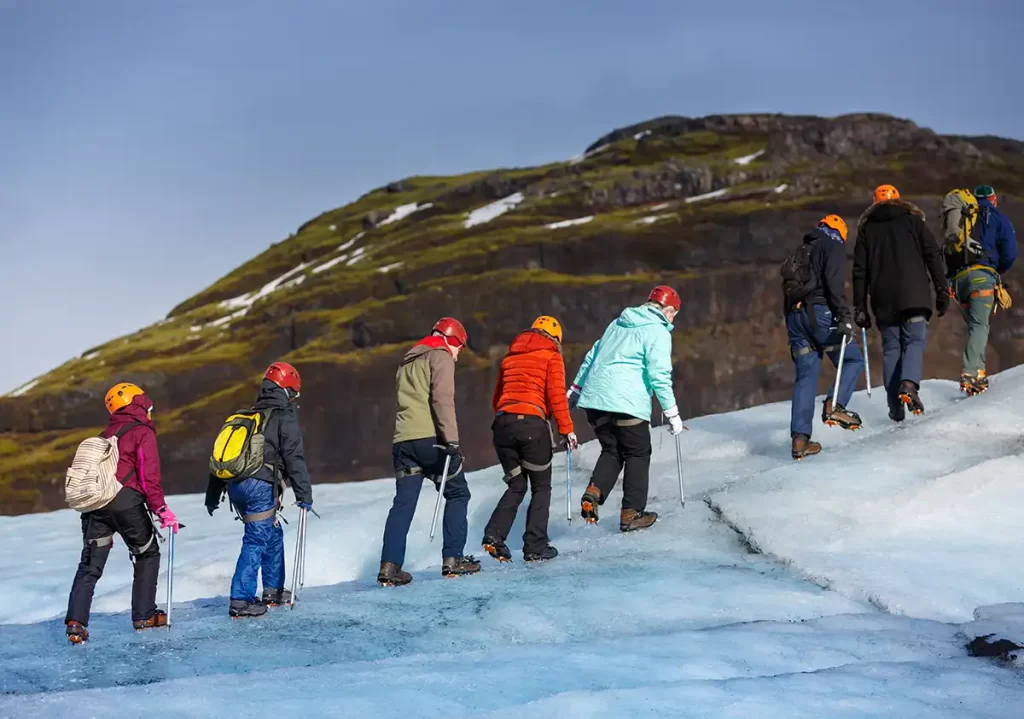
Difficulty and Preparation for Chadar Trek
The Chadar Trek is classified as moderate to difficult, not because of steep climbs but due to the extreme cold and slippery ice. Walking on the frozen river requires balance, endurance, and mental resilience. Trekkers face uneven, sometimes fragile ice, requiring careful footing and occasional climbs over rocky sections when the ice breaks. Here’s how to prepare for your Chadar Trek:
- Acclimatization: Spend 2-3 days in Leh to adjust to the altitude, with mandatory medical checks at SNM Hospital.
- Fitness: Train with jogging, swimming, or stair climbing to build endurance for long days on ice (15-17 kilometers daily).
- Gear: Pack warm layers, a sleeping bag rated for -25°C, sturdy trekking shoes (gumboots are popular locally), trekking poles, and crampons (though not always needed). For your Chadar Trek 2025, consider eco-friendly gear like biodegradable sunblock to protect Ladakh’s fragile ecosystem.
- Permits: Obtain a permit from the Wildlife Department in Leh and a No Objection Certificate (NOC) from ALTOA, plus adventure travel insurance. Check our OutdoorKeeda Gear Guide for more tips on Chadar Trekking preparation.
- Cultural Respect: Learn basic Ladakhi greetings and respect local customs, like avoiding litter, to honor the Zanskar Valley’s Buddhist heritage during your Chadar Trek Ladakh.
Chadar Trek 2025 Summary: Key Details at a Glance
For a quick overview of your Chadar Trek Ladakh adventure, here’s a summarizing table with all the essentials for planning your Chadar Trekking journey in 2025:
| Detail | Chadar Trek Info |
| Distance | 62-105 km |
| Height | 10,390–11,123 ft (3,165–3,390 m) |
| Duration | 6-9 days |
| Best Time | Jan–Feb 2025 |
| Difficulty | Moderate to Difficult |
| Route Highlights | Chilling to Nerak via Tilat Sumdo, Shingra Koma, and Tibb Cave (Chadar Trek Ladakh) |
| Cultural Gems | Zanskar monasteries, local hospitality (Chadar Trekking culture) |
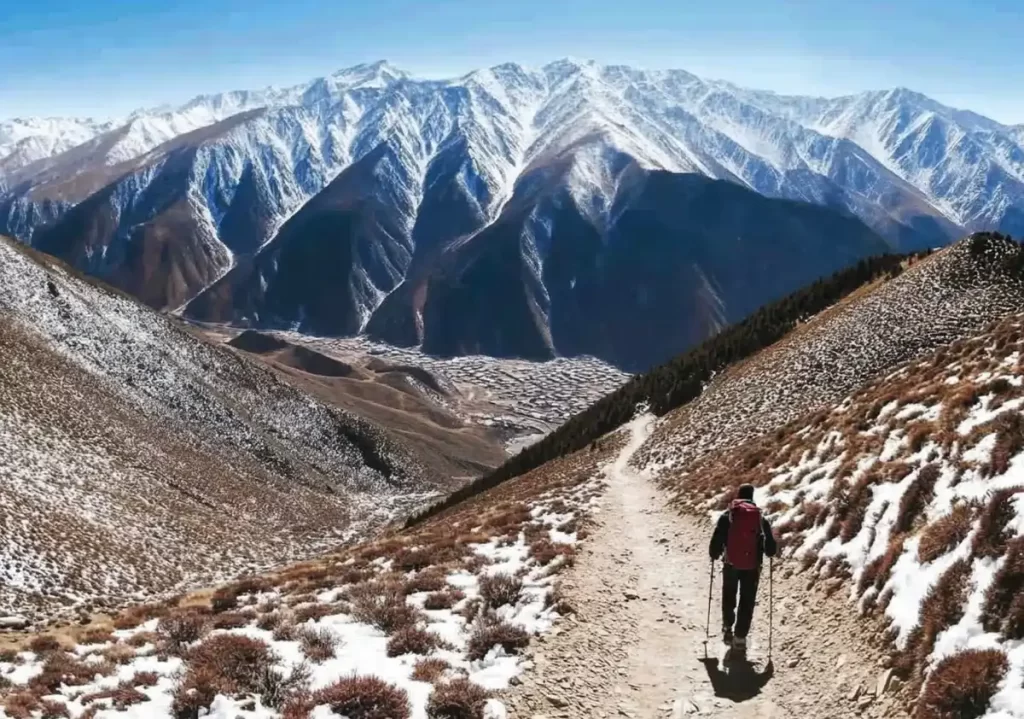
How to Reach the Chadar Trek
The only way to reach Leh in winter is by flight, landing at Kushok Bakula Leh Airport (the world’s highest commercial airport at 11,400 feet). Flights from Delhi to Leh take about 1 hour 15 minutes. From Leh, hire a taxi or take a bus to Chilling (62-75 km, 2.5-4 hours), where the Chadar Trek begins. Roads to Leh from Srinagar or Manali are closed in winter due to snow.
Safety and Tips for Chadar Trekking
Safety is paramount on the Chadar Trek. Trekkers must follow guides—often Zanskar locals with deep knowledge of the ice—and watch for thin or breaking ice. Stay hydrated, eat high-energy foods like Maggie and tea (offered midday), and layer clothing to combat the cold. Here are essential tips for your Chadar Trekking adventure:
- Stay hydrated and eat energy-rich foods to maintain stamina in sub-zero temperatures.
- Use trekking poles and gumboots for better grip on slippery ice.
- Watch for ice cracks and follow your guide’s instructions closely.
- Dry toilets and shelters like caves provide relief, but respect the harsh conditions.
- If the ice melts or weather turns, operators may adjust routes or cancel for safety—be flexible.

Why Choose the Chadar Trek for 2025?
In 2025, the Chadar Trek Ladakh remains a bucket-list adventure, offering a rare glimpse into Zanskar’s isolated culture and untouched beauty. It’s not just a trek—it’s a test of endurance, a cultural immersion, and a chance to witness nature’s frozen artistry. Whether you’re an experienced trekker or seeking a thrilling challenge, the Chadar Trek promises memories that last a lifetime.

